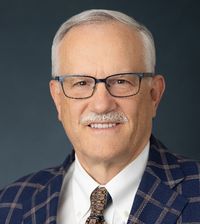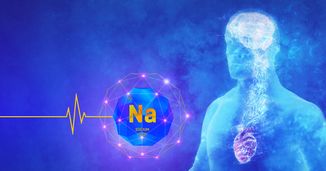Sleep, Sodium, and CVD - A Cardiology Perspective
This activity is supported by an educational grant from Jazz Pharmaceuticals, Inc.
Release Date: November 17, 2023
Expiration Date: November 17, 2024

 This activity is jointly provided by Partners for Advancing Clinical Education and Cardiometabolic Health Congress.
This activity is jointly provided by Partners for Advancing Clinical Education and Cardiometabolic Health Congress.
This activity is supported by an educational grant from Jazz Pharmaceuticals, Inc.
Program Overview:
Increased sodium intake is considered to be a leading risk factor for cardiovascular disease (CVD), including in the development of hypertension and risk of adverse cardiovascular outcomes. Additionally, the impact of commonly-used medications with high sodium content contributes to this burden. As such, it is important to address the risk of increased sodium intake in patients with CVD or at CVD risk, including patients with insufficient or impaired sleep, as well as practical strategies to minimize the impact of elevated sodium. This activity brings together multi-disciplinary experts in order to discuss some of these connections and share key clinical pearls in this area. The information is presented in an easy and digestible format, accompanied by additional resources and suggested readings.
LEARNING OBJECTIVES
After completing this activity, the participant should be better able to:
- Summarize the data about the association of increased sodium intake and its impact on CVD risk and CVD outcomes.
- List current recommendations on daily sodium intake in adults with CVD or at-risk for CVD.
- Consider the full spectrum of CVD risk beyond hypertension when evaluating sodium intake, including in patients with sleep disorders, cardiovascular and cardiometabolic comorbidities, and those using medications high in sodium content.
- Develop practical strategies to minimize the impact of dietary and non-dietary sodium to reduce CVD risk.
TARGET AUDIENCE
Sleep specialists, psychiatrists, neurologists, pulmonologists, primary care physicians, nurses, nurse practitioners, physician assistants, pharmacists and allied healthcare professionals.
FACULTY

Virend K. Somers, MD, PhD (Chair)
Professor of Medicine, Mayo Clinic
Rochester, MN Dr. Somers discloses the following:
- Advisor: Good Sleep

Lawrence J Appel, MD, MPH, FACP, FAHA
C. David Molina Professor of Medicine
Director, Welch Center for Prevention, Epidemiology and Clinical Research
Johns Hopkins University School of Medicine
Baltimore, MD
Dr. Appel has nothing to disclose.

Richard K. Bogan, MD, FCCP, FAASM
Associate Clinical Professor
Medical University of South Carolina, Charleston, SC
University of South Carolina, Columbia, SC
Principal, Bogan Sleep Consultants, LLC Dr. Bogan discloses the following:
- Shareholder WaterMark Medical, Healthy Humming, LLC
- Board of Directors: WaterMark Medical
- Consultant to Jazz, Harmony Biosciences, Takeda, Avadel, Oventus
- Industry funded research for Avadel, BresoTec, Idorsia, Suven, Jazz, Balance, Vanda, Merck, Eisai, Philips, Fresca, Takeda, Liva Nova, Roche, Sommetrics, NLS, Sanofi, Apnimed
- Speakers Bureau for Jazz, Eisai, Harmony, Idorsia

Deborah J. Clegg, PhD, RD
Vice President for Research
Professor, Internal Medicine
Texas Tech University Health Sciences Center
El Paso, TX
Dr. Clegg has nothing to disclose.
JOINT PROVIDERSHIP STATEMENT



In support of improving patient care, this activity has been planned and implemented by Partners for Advancing Clinical Education (PACE) and Cardiometabolic Health Congress (CMHC). PACE is jointly accredited by the Accreditation Council for Continuing Medical Education (ACCME), the Accreditation Council for Pharmacy Education (ACPE), and the American Nurses Credentialing Center (ANCC), to provide continuing education for the healthcare team.
PHYSICIAN CONTINUING EDUCATION
PACE designates this enduring material for a maximum of 2.25 AMA PRA Category 1 Credits™. Physicians should claim only the credit commensurate with the extent of their participation in the activity.
NURSING CONTINUING EDUCATION
The maximum number of hours awarded for this Continuing Nursing Education activity is 2.25 contact hours. Pharmacotherapy contact hours for Advance Practice Registered Nurses will be designated on your certificate.
PHARMACY CONTINUING EDUCATION
PACE designates this continuing education activity for 2.25 contact hours (0.225 CEUs) of the Accreditation Council for Pharmacy Education.
Universal Activity Number - JA4008073-9999-23-293-H01-P. Type of activity: Application
For Pharmacists: Upon completing the post-test and the activity evaluation form, transcript information will be sent to the NABP CPE Monitor Service within 4 – 6 weeks.
METHOD OF PARTICIPATION & REQUEST FOR CREDIT
There are no registration fees for this activity. During the period November 17, 2023 through November 17, 2024, participants must read the learning objectives and faculty disclosures, study the educational activity, obtain a score of 75% or better on the post-test, and complete the evaluation. Upon completing, your certificate will be available for print.
For additional information about the accreditation of this activity, please visit https://partnersed.com.
For Pharmacists: Please complete the evaluation instructions above. Upon registering and completing the activity evaluation, your transcript information will be sent to the NABP CPE Monitor Service within 4-6 weeks.
DISCLOSURES
The PACE planners and others have no relevant financial relationship(s) to disclose with ineligible companies. The CMHC planners and others have no relevant financial relationship(s) to disclose with ineligible companies.
DISCLOSURE OF CONFLICT OF INTEREST
PACE requires instructors, planners, managers, and other individuals who are in a position to control the content of this activity to disclose all financial relationships they may have with ineligible companies. All relevant financial relationships are thoroughly vetted and mitigated according to PACE policy. PACE is committed to providing learners with high-quality accredited CE activities and related materials that promote improvements or quality in healthcare and not a specific proprietary business interest of an ineligible company.
DISCLOSURE OF UNLABELED USE
This educational activity may contain discussion of published and/or investigational uses of agents that are not indicated by the FDA. The planners of this activity do not recommend the use of any agent outside of the labeled indications. The opinions expressed in the educational activity are those of the faculty and do not necessarily represent the views of the planners. Please refer to the official prescribing information for each product for discussion of approved indications, contraindications, and warnings.
DISCLAIMER
Participants have an implied responsibility to use the newly acquired information to enhance patient outcomes and their own professional development. The information presented in this activity is not meant to serve as a guideline for patient management. Any procedures, medications, or other courses of diagnosis or treatment discussed or suggested in this activity should not be used by clinicians without evaluation of their patient’s conditions and possible contraindications and/or dangers in use, review of any applicable manufacturer’s product information, and comparison with recommendations of other authorities.

